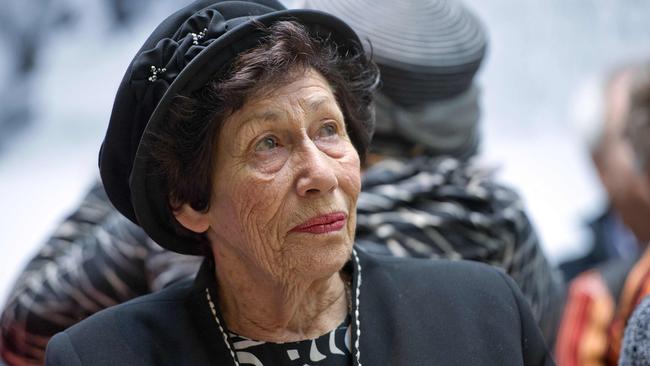Like Anne Frank, Hannah Goslar’s life was up-ended by the Holocaust
Fate threw Hannah Goslar together with Anne Frank when they were children, but destiny determined unimaginably different lives for them.

OBITUARY
Hannah Pick-Goslar. Nurse.
Born November 12, 1928, Tiergarten, Germany; died Jerusalem, October 28, aged 93.
-
In 1934, two girls born more than 500km and six months apart chanced upon each other on a Dutch street.
The shadows of epochal events to come were already striding through their innocent lives; their encounter was a shiver from a virus in its first stages of multiplying.
Hannah Goslar was born in the suburbs of Berlin to Hans, a senior member of the Weimar Republic that governed Germany until the rise of Adolf Hitler, and Ruth, a teacher. Sacked and threatened, Hans moved the three of them to Amsterdam.
Soon after, Ruth went to a local shop where she bumped into Edith Frank, who with her businessman husband Otto had fled the rising tide of murderous anti-Semitism engulfing their hometown, Frankfurt. Edith’s maiden name had been Hollander, German for Dutchman, and her family had roots in the Netherlands.
Perhaps one overhearing the other’s failing attempts to communicate in Dutch, the strangers spoke to each other in German. Their daughters made eye contact. The following day, Ruth took Hannah to start kindergarten where Hannah saw the little girl from the day before “making music with bells”. Anne Frank hugged Hannah who Anne would name Henneli. Hannah called her friend Anna. Spirited girls, together they learned Dutch – their native tongue was increasingly best avoided – and would skip, and play hopscotch and marbles.
The girls lived on Merwedeplein Square in Amersterdam South, Hannah at No. 33, the Franks at 37. Hannah always described her friend as normal, outgoing but also “spicy”. And long before Anna had to hide from Germans and started on her legendary diary, she was writing away – at lunchtime and in between lessons. Perhaps she was practising her Dutch – that is the language in which she wrote her diary – but she shooed away anyone who showed interest in those early words.
The girls attended one of the first Montessori schools and the years until 1940 appear to have been mostly uneventful. The Netherlands had declared its neutrality at the beginning of World War II, as it had in World War I, but the Germans invaded anyway in May 1940 and Queen Wilhelmina, who, until that very moment, disliked the British, fled to London.
The Dutch were easily overrun and surrendered. This was bad news for the country’s Jews, 75 per cent of whom would not survive the war. With a Teutonic sense of order, the occupiers registered all Jews and segregated them and then set about deporting and exterminating them.
The girls were ousted from Montessori and moved to an all-Jewish school which Anne’s sister Margot also attended. By then Hannah’s mother had given birth to second child Rachel, but in 1942 she died giving birth to a third who also died. That year the Franks went into hiding and Anne began writing the diary that her father would publish after the war as Diary of a Young Girl. There are many mentions of Hanneli among a cast of real and make-believe friends, an imagined community to whom Anne wrote daily as her family hid in darkness. Authorities learned of their presence and the Franks were arrested and transported to Auschwitz. They were separated from Otto. Edith would die there not long after the girls were sent on to the Bergen-Belsen concentration camp.
Hannah’s family had been picked up the year before and she was already in Belsen. The girls, incarcerated in separate sections fenced off with barbed wire, spoke three times in the first weeks of 1945. Risking death, Hannah twice threw packages of food over to Anna. One was stolen by another desperate inmate, the second, with a pair of socks, reached her. Margot and Anne caught typhus and died a day apart about a fortnight later, probably at the end of March 1945, unaware their mother had died days before.
Hitler outlived the Frank sisters by three weeks, but Hannah outlived Hitler by more than 77 years.
After the war – only she and Rachel among the Goslars survived – she returned to Amsterdam and learned from Anne’s father that his daughters were dead. She recovered in a Swiss sanatorium, migrated to Israel, trained to be a nurse and married a doctor, Walter Pinchas Pick. She returned to Belsen to take part in two documentaries about Anne, and until recent years she spoke to schoolchildren about the tragedy of the war and the friends she had lost, in the hope their story never would be.
Walter and she had three children, 11 grandchildren and, at last count, 33 great-grandchildren, a considerable brood she described as “my answer to Hitler”.




To join the conversation, please log in. Don't have an account? Register
Join the conversation, you are commenting as Logout